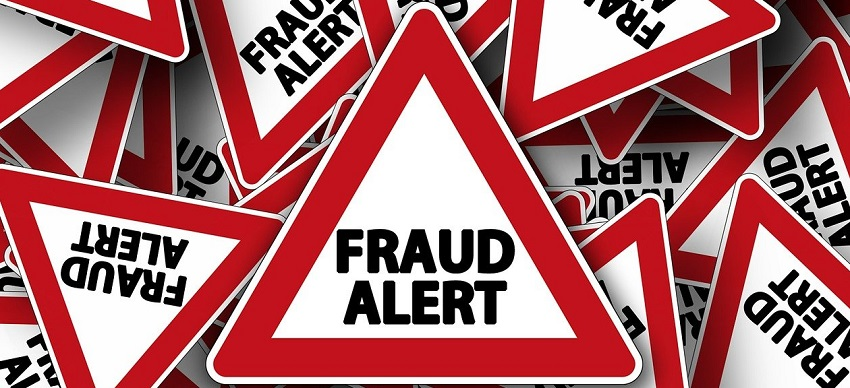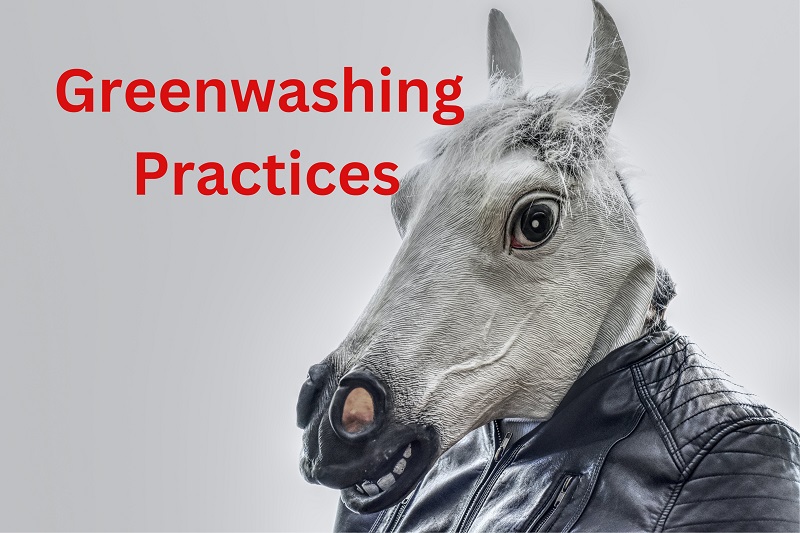Some Greenwashing Practices to Watch Out For
Greenwashing is the act of deceiving consumers into believing a company or product is environmentally friendly when it’s not.
Some examples include vague or misleading labeling, irrelevant or exaggerated claims, lack of transparency, false certifications, token gestures, green imagery, diversionary tactics, lack of context, unsubstantiated claims, and ignoring bigger issues.
To avoid being misled, consumers should be critical and conduct thorough research when assessing environmental claims.
As consumers, we are becoming more aware of the impact our purchases have on the environment.
At startingeco.com, we believe in the power of transparency, honesty, and genuine commitment to sustainable practices.
We are dedicated to providing you with accurate information about greenwashing and how to identify it.
In this article, we will delve into the deceptive practices often employed by companies, discuss the detrimental effects of greenwashing, and equip you with valuable insights to distinguish authentic eco-friendly initiatives from misleading claims.
What are the three types of greenwashing?

There are three main types of greenwashing: vague claims, lack of evidence, and irrelevant claims.
1. Vague claims are statements like “eco-friendly” or “green claims” without any specific information to back up the claim.
2. Lack of evidence is when companies make an environmental claim but don’t provide evidence to support it.
3. Irrelevant claims are when companies promote an environmental attribute that is not related to their product or service.
By understanding these three types of greenwashing, consumers can make more informed decisions and support companies that genuinely prioritize sustainable business practices.
How to spot misleading environmental claims

Greenwashing, a term coined in the 1980s, refers to the act of conveying a false impression or misleading consumers about the environmental benefits of a product, service, or company.
Unfortunately, many businesses resort to greenwashing tactics in an attempt to appear environmentally conscious, capitalizing on the growing demand for sustainable solutions.
Greenwashing examples
1. Vague and Empty Terminology
Beware of terms like “eco-friendly,” “green,” or “sustainable” when they lack concrete evidence or meaningful certifications.
Greenwashing often relies on ambiguous language to create an illusion of eco-friendliness without substantial substance.
2. Irrelevant Images and Claims
A common tactic employed by greenwashing is the use of nature-related images or symbols that have no direct connection to the product or service being promoted.
This visual manipulation seeks to create an association with environmental values, even when reality falls short.
3. Lack of Transparency
Transparency plays a vital role in distinguishing genuinely sustainable practices from greenwashing.
When companies fail to provide comprehensive information about their environmental initiatives, certifications, or sourcing methods, it raises red flags and suggests potential greenwashing.
4. Misleading Statistics
Be cautious of unsupported claims or statistics that appear too good to be true.
Greenwashing often employs cherry-picked data or vague statements to manipulate public perception.
Look for specific, verifiable details to assess the legitimacy of environmental claims.
5. Incomplete Lifecycle Assessment
Authentic sustainable practices involve considering the entire lifecycle of a product or service, from sourcing materials to disposal.
Greenwashing frequently neglects these aspects and focuses solely on certain stages that appear environmentally friendly, distorting the overall impact.
The Consequences of Greenwashing

Greenwashing not only undermines consumer trust but also hampers genuine sustainability efforts.
By deceiving customers, companies divert attention and resources from businesses that are genuinely striving to make a positive environmental impact.
Additionally, greenwashing can lead to skepticism and cynicism, making it more challenging for consumers to differentiate between credible and deceptive claims.
Empowering Consumer Choice Based on Environmental Benefits

As consumers, we have the power to drive change by making informed decisions and supporting companies that prioritize sustainability and have environmental benefits.
Here are some tips to help you avoid falling victim to greenwashing:
1. Research and Verify Green Marketing
Before making a purchase or engaging with a company, conduct thorough research for green marketing practices.
Look for concrete evidence, certifications from reputable organizations, and transparent disclosure of sustainable practices.
2. Scrutinize Labels and Certifications
Become familiar with recognized certifications and labels associated with genuine environmental commitments.
Certifications such as Energy Star, Forest Stewardship Council (FSC), or USDA Organic assure credibility.
3. Seek Independent Reviews
Consult independent sources and consumer reviews to gain insights into a company’s environmental practices.
Online communities and platforms dedicated to sustainability can offer valuable information and experiences shared by like-minded individuals.
4. Engage in Dialogue About Your Green Concern
Ask questions and seek clarification from companies about their sustainability claims.
Genuine businesses will be transparent and willing to provide detailed information about their initiatives.
5. Support Verified Sustainable Brands With Green Practices
By consciously supporting companies that have demonstrated a genuine commitment to sustainability, we can encourage responsible business practices and foster a collective movement toward eco-friendly brands.
The Importance of Authentic Sustainability Claims

In a world facing significant environmental challenges, the need for authentic sustainability practices is more crucial than ever.
Greenwashing not only misleads consumers but also hinders progress toward a greener future.
By supporting companies that prioritize genuine environmental efforts, we can drive positive change and contribute to a more sustainable society.
The Role of Regulatory Bodies and Green Marketing

Regulatory bodies play a vital role in combating greenwashing and ensuring transparency in environmental claims.
There needs to be a reliable third party certification body.
Organizations such as the Federal Trade Commission (FTC) in the United States and similar agencies worldwide are responsible for monitoring and penalizing deceptive greenwashing practices.
However, as consumers, we must also remain vigilant and informed.
Encouraging Accountability and Transparency
Companies need to take responsibility for their environmental impact and communicate their sustainability practices openly.
By embracing transparency, businesses can build trust with consumers and foster a culture of genuine environmental stewardship.
This includes providing detailed information about sourcing methods, manufacturing processes, waste management, and overall environmental performance.
Collaboration for a Sustainable Future
Creating a sustainable future requires collaboration between consumers, businesses, and governments.
By actively engaging in dialogue and demanding accountability, consumers can influence companies to adopt genuine sustainability practices.
Similarly, governments can enact stricter regulations to curb greenwashing and incentivize businesses to prioritize authentic environmental initiatives.
Is Greenwashing Illegal In The US?
Yes, greenwashing is illegal in the US and Canada. The U.S. Federal Trade Commission FTC the U.S. Environmental Protection Agency and in Canada, section 52 (1) of the Competition Act, creates a general criminal prohibition against misleading advertising by prohibiting all materially false or misleading representations.
While there are laws and regulations in place to prevent false advertising, they are often difficult to enforce and penalties may not be severe enough to deter companies from engaging in greenwashing practices.
However, there are also organizations and certifications that can help consumers identify truly eco-friendly products and hold companies accountable for their claims.
Overall, while greenwashing may not be explicitly illegal, it is important for consumers to do their due diligence and carefully evaluate companies’ environmental claims before making a purchase.
What Company Has Done Greenwashing?
Below is a list of companies that have faced accusations or controversies related to greenwashing:
- Volkswagen (VW): In 2015, Volkswagen was involved in the “Dieselgate” scandal where it was discovered that the company had manipulated emissions testing in its diesel vehicles to meet regulatory standards.This incident led to significant environmental and financial consequences for the company.
- BP (British Petroleum): BP faced criticism for a greenwashing campaign in the early 2000s, where it rebranded itself as “Beyond Petroleum” to promote its commitment to renewable energy. However, the company’s core operations remained focused on fossil fuels, leading to allegations of misleading marketing.
- Chevron: There have been allegations of greenwashing due to its advertising campaigns that promote its commitment to environmental stewardship while simultaneously being involved in controversial environmental incidents and legal battles related to pollution and human rights violations.
- Nestlé: The company has faced criticism for its bottled water business and the associated impact on the environment. The company has been accused of greenwashing by promoting its water brands as sustainable while depleting water sources and contributing to plastic waste.
- ExxonMobil: This corporation has faced allegations of greenwashing due to its inconsistent messaging on climate change. They have been accused of funding climate denial campaigns while publicly expressing support for climate action, leading to accusations of misleading the public.
- H&M: This fast-fashion retailer, has faced accusations of greenwashing through its sustainability initiatives. Critics argue that the company’s efforts to promote recycling and sustainable fashion are insufficient to address the significant environmental impact of the fast-fashion industry.
- Shell: Has faced scrutiny for its greenwashing practices, particularly regarding its advertising campaigns highlighting investments in renewable energy. These initiatives are a small fraction of the company’s overall activities, which primarily involve fossil fuel extraction.
- JBS: One of the largest meatpacking companies globally, has been accused of greenwashing due to inconsistencies in its sustainability claims. The company has faced allegations of deforestation linked to its supply chain and its role in the Amazon rainforest destruction.
Corporate Social Responsibility

As the world becomes more environmentally aware, many companies are taking steps towards becoming more sustainable. Corporate social responsibility (CSR) plays a key role in this movement.
In today’s society, companies have a responsibility to be aware of the environmental impact that their operations have on the world around them.
Companies must demonstrate an awareness of the damaging effects that their actions can have on the planet.
This is where the concept of environmental sustainability comes in.
By taking steps to reduce carbon emissions, responsibly manage waste, and minimize waste packaging, companies can contribute to reducing their environmental impact.
These steps not only benefit the planet but also help to improve a company’s reputation as a responsible and ethical organization.
My Last Two Cents About Greenwashing
As conscientious consumers, it is our responsibility to remain vigilant and informed about greenwashing.
By understanding the deceptive tactics used and actively seeking out authentic sustainability practices, we can support companies that are truly committed to making a positive impact on our environment.
Remember to conduct thorough research, scrutinize labels and certifications, seek independent reviews, engage in dialogue, and support verified sustainable brands.
Together, we can create a greener future based on genuine environmental stewardship and transparency.


